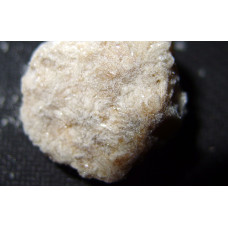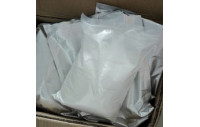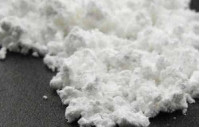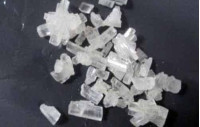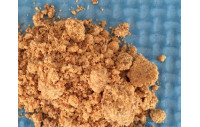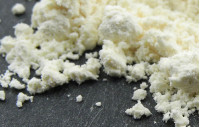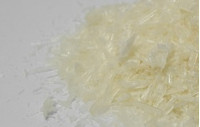
Buy 3-MMC for sale online from USA vendor
Discount program: 5% OFF for the second order, 7% OFF for the third order.
Shop with us securely! We offer re-shipment guarantees.
We always provide new, legal products of impeccable quality.
Please make sure that the product is legal in your country and not under any restrictions before ordering.
We do not sell pharmaceutical products or controlled substances.
Table of Contents
- 3-MMC
- The History
- Effects
- Dosage Considerations
- Legal Status
- Pharmacology and Chemistry
- Chemistry
- The 3-MMC Trip: User Experiences
- Conclusion
- FAQ
3-MMC
3-MMC, scientifically known as 3-Methylmethcathinone, is a synthetic stimulant in the cathinone class of chemicals. Cathinones are structurally similar to amphetamines and are known for their stimulant and empathogenic properties. 3-MMC is considered a close relative of Mephedrone (4-MMC), a substance that gained widespread popularity in the early 2010s before being banned in many countries due to its health risks.
The History
3-MMC's History is closely intertwined with the rise and fall of Mephedrone. Mephedrone gained significant popularity as a "legal high" and was marketed as a plant food or bath salts to bypass regulations. The demand for alternative substances rose as governments began cracking down on Mephedrone due to its adverse effects. This led to the emergence of compounds like 3-MMC as potential replacements, often marketed with labels such as "research chemicals" to circumvent legal restrictions.
Effects
The effects of 3-MMC are similar to those of other stimulants, including increased energy, alertness, and a sense of euphoria. Users have reported heightened sociability and empathogenic feelings, often feeling more connected to others. Some describe enhanced sensory perception and a greater appreciation for music and other stimuli. However, like many stimulants, 3-MMC can also lead to undesirable effects such as anxiety, restlessness, increased heart rate, and potential crashes as the effects wear off.
Dosage Considerations
Determining the dosage for 3-MMC is challenging due to its limited research and varying potency between batches. Moreover, individual tolerance and body chemistry significantly affect how one responds to the substance. A typical oral dose might range from 100 to 150 milligrams, with effects usually kicking in within 15 to 30 minutes and lasting around 2 to 4 hours. It's crucial to start with a low dose and exercise caution to avoid potential overdose or adverse reactions.
Legal Status
The legal status of 3-MMC varies significantly worldwide. In some countries, it's regulated as a controlled substance due to its potential health risks and abuse potential. In other regions, it remains unregulated or falls under a legal gray area, often leading to its availability through online channels. Individuals need to research and understand their local laws regarding 3-MMC and similar substances to avoid legal consequences.
Pharmacology and Chemistry
3-MMC's effects are primarily attributed to its impact on the brain's neurotransmitter systems, particularly the release and reuptake of dopamine, norepinephrine, and serotonin. This results in the stimulating and euphoric effects reported by users. Structurally, 3-MMC is closely related to other cathinones, featuring a beta-keto substitution that enhances its potency and effects compared to its precursor, cathinone.
Chemistry
Chemically, 3-MMC is a synthetic compound with a molecular formula C11H15NO. It features a substituted cathinone structure, a common motif in stimulant substances. This structure gives it its stimulating properties, acting as a releasing agent for neurotransmitters in the brain. The precise synthesis and manufacturing processes for 3-MMC are proprietary and may vary between different production sources.
The 3-MMC Trip: User Experiences
User experiences with 3-MMC vary widely, influenced by dosage, setting, individual tolerance, and overall mental state. Some users describe a rush of energy, increased sociability, and heightened well-being. Others report increased sensory perception, with music and visuals appearing more vibrant and engaging. However, negative experiences, including anxiety, paranoia, and physical discomfort, also occur. Additionally, the "comedown" phase after the effects wear off can lead to feelings of depression and lethargy.
Conclusion
3-MMC, a synthetic stimulant with empathogenic properties, has garnered attention for its effects on mood and energy. As with any substance, informed and responsible use is crucial to minimize risks and potential adverse effects. The History of 3-MMC's emergence as an alternative to Mephedrone highlights the ongoing challenge of regulating novel psychoactive substances. Individuals must understand the legal status in their region and prioritize their health and safety when considering the use of substances like 3-MMC. As research continues, a clearer picture of its effects and potential long-term consequences will hopefully emerge, guiding individuals toward informed decisions.
FAQ
1. What is 3-Methylmethcathinone (3-MMC)?
3-Methylmethcathinone, often referred to as 3-MMC, is a synthetic stimulant compound. It is a derivative of cathinone, a natural amphetamine-like compound found in the khat plant.
2. Is 3-MMC legal?
The legal status of 3-MMC varies by country and region. It is important to check the specific laws and regulations in your area before acquiring or using 3-MMC, as it may be classified as a controlled substance in some places.
3. How is 3-MMC typically consumed?
3-MMC is commonly consumed orally, often in the form of capsules or powder. Some users also choose to insufflate (snort) it. It is essential to use proper harm reduction practices and dosing guidelines when consuming 3-MMC.
4. What are the effects of 3-MMC?
3-MMC is known for its stimulant and empathogenic effects. Users report increased alertness, euphoria, enhanced sociability, and heightened sensory perception. However, like other stimulants, it can also have side effects and risks, such as an increased heart rate and potential addiction.
5. Are there any potential risks associated with 3-MMC use?
Yes, there are potential risks associated with 3-MMC use. These may include addiction, cardiovascular problems, anxiety, insomnia, and, in some cases, overdose. It is essential to use 3-MMC responsibly and be aware of its potential risks.
6. Can 3-MMC be used safely?
While some individuals use 3-MMC recreationally, safety depends on various factors, including dosage, frequency of use, and individual health. To minimize risks, it is essential to start with a low dose, avoid frequent use, and educate yourself about harm reduction practices.
7. Is 3-MMC similar to other cathinones or synthetic stimulants?
3-MMC is chemically related to other cathinones, such as mephedrone and MDPV. It shares some similar effects and risks with these substances. However, the specific effects and risks can vary.
8. Can 3-MMC be used for therapeutic purposes?
3-MMC is not approved for any medical or therapeutic use. It is primarily used for recreational purposes and should be approached with caution.
9. How can I reduce the potential harm associated with 3-MMC use?
To reduce harm, consider following harm reduction guidelines, which may include starting with a low dose, staying hydrated, taking breaks, and avoiding combining 3-MMC with other substances. Additionally, seek support and information from harm reduction organizations and professionals.
10. Where can I find more information and support related to 3-MMC use?
If you have questions or concerns about 3-MMC use, it is advisable to reach out to harm reduction organizations, substance abuse treatment centers, or medical professionals. They can provide guidance, support, and information to help you make informed choices.
Remember that the use of 3-MMC can be associated with significant risks, and it's essential to approach its use with caution and responsibility. Always prioritize your health and safety.
11. Where to get 3-MMC?
You can buy 3-MMC from the best supplier at Flakkaforsale.online
To prepare the content, the following materials were used:
- FDA Substance Registration System
- Hazardous Substances Data Bank. National Library of Medicine. 28 August 2008. Retrieved 22 August 2014. 3,4-Methylenedioxymethamphetamine
- Liver transplant modulates gut microbial dysbiosis and cognitive function in cirrhosis. PDF . By HoChong Gilles, Scott C Matherly, Mohammed S Siddiqui, Puneet Puri...
- Differential impact of hyponatremia and hepatic encephalopathy on health-related quality of life and brain metabolite abnormalities in cirrhosis . By Jasmohan Bajaj
- An overview of alcohol and other drug issues
- Medicating the mind: a Kantian analysis of overprescribing psychoactive drugs B A Manninen
- The pharmacological basis of opioids Carla Ghelardini, Lorenzo Di Cesare Mannelli and Enrica Bianchi
- Ask Dr. Shulgin Online ARCHIVE: June 3, 2004
- Inhibition of plasma membrane monoamine transporters by β-ketoamphetamines. Nicholas V Cozzi, Michael KSievert, Alexander T Shulgin, Peyton JacobIII, Arnold Eruoho
- Schedules of Controlled Substances: Placement of Methylone Into Schedule I
- Bioanalysis of new designer drugs. Wohlfarth A, Weinmann W.
- New Psychoactive Substances (including synthetic cannabinoids, mephedrone, and more)
- Future Synthetic Drugs of Abuse. Donald A. Cooper. Drug Enforcement Administration McLean, Virginia
- Designer drugs: a medicinal chemistry perspective. F. Ivy Carroll Anita H. Lewin S. Wayne Mascarella Herbert H. Seltzman P. Anantha Reddy
- Synthetic cannabinoids in Europe
- Pharmacological Effects of MDMA in Man. By Enno Freye
- Drug Use in Relation to Outcome of Mammography Screening. von Euler-Chelpin M, Wu W, Vejborg and Lynge E
- DEA Drug Scheduling
- Electrophysiological Effects of Trace Amines on Mesencephalic Dopaminergic Neurons.Ada Ledonne, Nicola Berretta, Alessandro Davoli, Giada Ricciardo Rizzo, Giorgio Bernardi and Nicola Biagio Mercuri
- Electrophysiological evidence for a reciprocal interaction between amphetamine and cocaine-related drugs on rat midbrain dopaminergic neurons.Scarponi M, Bernardi G, Mercuri NB.
- Overdose of Drugs for Attention-Deficit Hyperactivity Disorder: Clinical Presentation, Mechanisms of Toxicity, and Management. Henry A. Spiller, author Hannah L. Hays Alfred Aleguas.
- Dose-dependent effectiveness of wheel running to attenuate cocaine-seeking: impact of sex and estrous cycle in rats. Peterson AB, Hivick DP, Lynch WJ.r.
- FDA Drug Safety Communication: Safety Review Update of Medications used to treat Attention-Deficit/Hyperactivity Disorder (ADHD) in children and young adults
- ADHD Medications and Risk of Serious Cardiovascular Events in Young and Middle-aged Adults
- Controlled Substances Act
- The Art of Drug Synthesis (Wiley Series on Drug Synthesis)
- Cannabis: domestic cultivation widespread
- A review of the influence of functional group modifications to the core scaffold of synthetic cathinones on drug pharmacokinetics
100g $500
1kg $1590
1kg $1590
500g $1700
1kg $1590
100g $510
100g $690
1kg $1590
100g $510
100g $690
200g $690
1kg $1590

